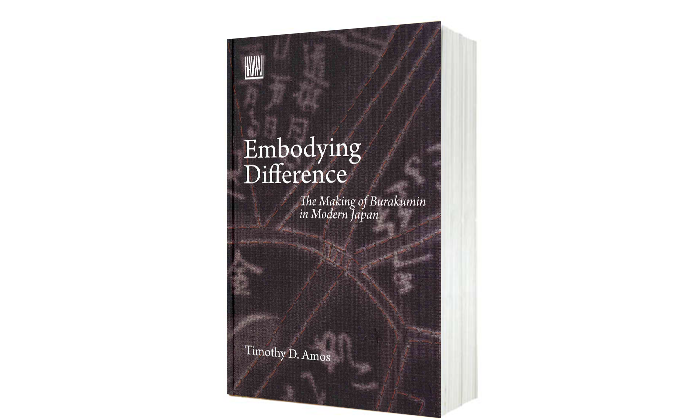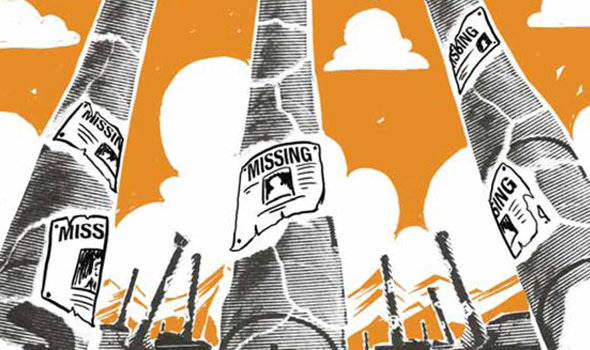‘Burakumin Die!’
‘Human Garbage!’
Endless discriminatory graffiti and phone calls.
One person confronts another; tells them to die.
Such terrible things… –
Maeda Katsumasa (1989)
For anyone from our part of the world, the familiar frisson of mortification is all too frequently felt throughout Timothy D. Amos’s monograph on the Burakumin, the Japanese “outcastes”. Poet/activist Maeda Katsumasa’s anguish at the historic and continuing discrimination against his people, described variously through history as “impure”, “contaminated” or, in his words, “garbage” is the subject of Amos’s present volume. The scholar, through painstaking research, introduces various colours that he feels have been extinguished in the construction of a metanarrative of the Burakumin identity. In the process, Amos reveals aspects of the apparently homogenous Japanese society which are shockingly similar to the resilient Varna Vyavastha in India permeating not just the ritualistic Hindu society but equally contaminates the Muslims, Sikhs as well as Christians residing here.
Some of the experiences, especially the ‘Mass Discriminatory Postcard Affair’ described by researcher Uramoto Yoshifumi, or the writings of Kawamoto Yoshikazu are embarrassingly similar to the routine harassment that our presumably meritorious middle-class boys dish out to those precious few with the temerity to qualify to prestigious educational institutions through caste quotas, and the barely concealed contempt reserved for Dalits in Indian society. Sample Yoshikazu’s experience that Amos quotes by way of demonstrating parallels between this scholar’s distress with his Indian counterparts – Dalit scholar Sukhdeo Thorat and Dr B. R. Ambedkar:
“About the time I entered elementary school, I began to sense that the village in which I grew up was being looked at differently by the people around me. It is difficult to say precisely what made me feel this way, but as I lived from day-to-day, I noticed little things, like stares that I had never experiences before in my own village. What kind of stares? Of course, it is extremely difficult to put my finger on what these stares were, even if I felt them strange myself…” (Kawamoto, Buraku mondai towa nanika, 13-14)
Amos cites Sukhdeo Thorat’s experience in the same vein: “From the age when you learn to walk and talk, the limits are delineated: residential, physical and social isolation combined with day-to-day humiliation. All rural Dalit children face one form of humiliation or another. At school, there is hardly any interpersonal relationship between the Dalit student and the teacher, and the feeling of isolation is heightened.” (Quoted in S. Anand, “Caste on the Couch: Do Brahminical Ideologies Permeate Indian Psychological Theory?” in Himal, April 24, 2003)
The ‘Mass Discriminatory Postcard Affair’ bears close resemblance to the experience of a Dalit postgraduate student in All India Institute of Medical Sciences (AIIMS) that she described to me during fieldwork for a journalistic piece on caste discrimination in elite educational institutions – “They initially could not figure out my Dalit identity because I did not, presumably, look like one or did not have an easily distinguishable caste name. But when they did, I was segregated publicly and humiliated by people I thought had become my friends. How did you even think of entering our circle, I was asked.” This gels almost organically with Uramoto Yoshifumi’s ‘Postcard Affair’.
In May, 2003, Uramoto, a researcher and activist at the Tokyo headquarters of the Buraku Liberation League (BLL), received numerous packages in the mail marked ‘pay on delivery’ that he did not recall ordering. They were followed by dozens of postcards, some of which contained death threats such as, “For an eta (a pejorative reference to outcastes in pre-modern Japan), Uramoto Yoshifumi is pretty up himself. I’ll kill him.”
Though Uramoto fought and used this as an instance of continuing discrimination against the Burakumin, Amos describes the historical and ongoing trend in Japan to bury the ‘Buraku Problem’ by insisting that it does not exist. His layered analysis argues against the popular reductionist portrayal of today’s Burakumin as descendents of the pre-modern eta and hinin groups or people who reside in certain specific areas. The word ‘Burakumin’ has two parts – ‘Buraku’ which means hamlet and ‘min’ that means a person or people. The word, according to Amos, literally refers to people who live in a section of a village presumed to have substantial communal ties.
These communities were historically ostracized by neighbouring villages because of the popular perception that they were “contaminated” because they engaged in occupations linked with death such as tanning and burial. This too is a tangible similarity with the outcastes in India who have been ostracized, at least partly, owing to perceived occupational contamination. The chamars, doms et al are castes linked with death either of human beings or animals. Accordingly, people dealing with tanning, skinning, leather work etc. are targets of social ostracisation. Even among the Brahmins, the specific sub-caste engaged in performing last rites is considered at the bottom of the rung.
The obsession with maintaining ‘blood purity’ or supremacy of one group over another, reflects in reference to ‘pollution’ (kegare) and ‘purity’(kiyome) while discussing the Burakumin vis-à-vis other groups. Maeda’s poems reflect that one of the most common forms discrimination takes is marital discrimination. Some people in contemporary Japan are, to date, unable to marry partners of their own choice because prejudiced ideas about the importance of family lineage persists.
For anyone who considers Japan an alien culture, all this is uncannily identical to social practices still prevalent in India. But Amos’s work is not about international comparisons of ostracized communities. It is an attempt to explore discourses of difference, of people who were deemed to have been “different” in different times. So, there may not be any hereditary linkages between the pre-modern Eta and modern-day Burakumin, they are both communities that were discriminated against, albeit in different periods.
The monograph gives a rich glimpse of socially transformative changes brought about at different periods in Japanese history. From the early unifiers of Japan such as General Toyotomi Hideyoshi (1536-1598), who granted the elite Samurai a monopoly over the use of arms while disarming the peasantry through what is known as Sword Hunt Edict, to the more liberal policies adopted during the Meiji Restoration (especially the Emancipation Edict that apparently abolished the outcaste status to certain communities in the late 19th Century), Amos describes the continuity as well as the differences in the status of the Burakumin. In the intervening Takugawa period (1603-1868) when hierarchical relations were stratified and communities who were engaged in non-agricultural pursuits were ostracized, the Eta and Hinin were demonized through legislation and in popular culture. It is in this period that birth, in a real sense, became a major determinant in one’s status and identity.
Although Buraku activists assert a linear continuum, Amos argues against the conceptual vulnerability of this narrative. For instance, in the post-Takugawa period, during the Meiji Restoration, numerous people from non-outcaste backgrounds successfully entered the leather trade. Because of the fluidity of movement in and out of socially marginalized villages at a significant rate, it is difficult to conceptualise the Burakumin as a uniform minority group throughout history.
Various processes that followed the “enlightenment”— essentially a period in which Japan shed its isolationism and advocated the adoption of Western practices including popular egalitarianism— led to liberation movements organised by the Marxists as well as non-Marxist activists. The radical Suiheisha movement declared a pride in their Eta heritage and decided that they would fight against all forms of discrimination. The movement became dormant during the 1930s that brought in severe restrictions on social and political activists but revived in the postwar period. A noticeable achievement of these movements was the enactment of the Special Measures Law in 1965 that pushed the government to pump in funds to improve living conditions and standards of education in the Buraku areas.
Although rich in its conceptual framework and research, the book offers little in terms of economic status and landholding patterns among the Burakumin, something that would be considered important for assessment of a community’s social backwardness. Studies in landholding patterns of the Dalits in India (i.e. Mohanty B. B., Land Distribution Among Scheduled Castes and Tribes, Economic and Political Weekly) have established that they remain “vulnerable to injustice and exploitation” because they are the most disadvantaged in respect to owning land. Mohanty’s seminal research across 13 provinces showed that as many as 77 per cent of the Scheduled Castes in India are landless, a factor that he holds responsible for continuing oppression of the Dalits.
Japan being an industrialized society, perhaps landholding patterns are not as indicative of the level of discrimination and the discourse remains confined to ideational and conceptual aspects of the ‘Buraku Problem’. Another postscript in this otherwise superb analysis is that footnotes are vastly preferable to the undoubtedly exhaustive endnotes in the present volume. They may interfere with the design aspect of a book but if one is to really read it, sticking a bookmark to go back and forth while reading is an extremely irritating exercise.


